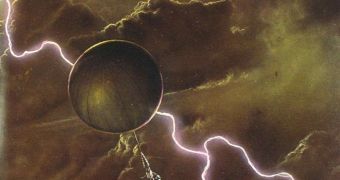Earth and Venus may have atmosphere with entirely different chemical compositions, but the lightnings they produce look remarkably similar, researchers behind a new study say.
They add that this finding only goes to demonstrate the vast number similarities that exist between our planet and Venus, which have often been dubbed fraternal twins.
Both of them have very similar size, mass and interior composition, which have lead many to compare them to each other extensively, Space reports.
“The generation of lightning is one more way in which Venus and Earth are fraternal twins,” explains University of California in Los Angeles (UCLA) professor Christopher Russell.
The scientist was also the lead author of a new study detailing the findings, which will be presented on September 23, at the European Planetary Science Congress, which is held in Rome, Italy.
According to the team, the data that lead to the conclusion of this research were collected from telemetry beamed back by the Venus Express orbiter, a robot of the European Space Agency (ESA).
What the group managed to prove is that lightnings on Earth and Venus have similar intensities at similar altitudes above ground level.
“We have analyzed 3.5 Earth-years of Venus lightning data using the low-altitude Venus Express data (10 minutes per day),” Russell explains.
“By comparing the electromagnetic waves produced at the two planets, we found stronger magnetic signals on Venus, but when converted to energy flux we found very similar lightning strength,” he goes on to say.
The investigation also reveals that the dayside of the planet is more prone to developing lightning storms, and also that low latitudes experience more such atmospheric events that higher ones.
When solar input in the Venusian atmosphere is very strong, lightning intensity increases considerably, the research also demonstrated,.
Such work can help planetary scientists shed more light on how the chemistry and dynamics of the two atmospheres evolved in time. Studying Earth and Venus side by side is the best way of doing that.
“Short, strong pulses of the signals expected to be produced by lightning were seen almost immediately upon arrival at Venus, despite the generally unfavorable magnetic-field orientation for entry of the signals into the Venus ionosphere at the altitude of the Venus Express measurements,” Russell adds.

 14 DAY TRIAL //
14 DAY TRIAL //